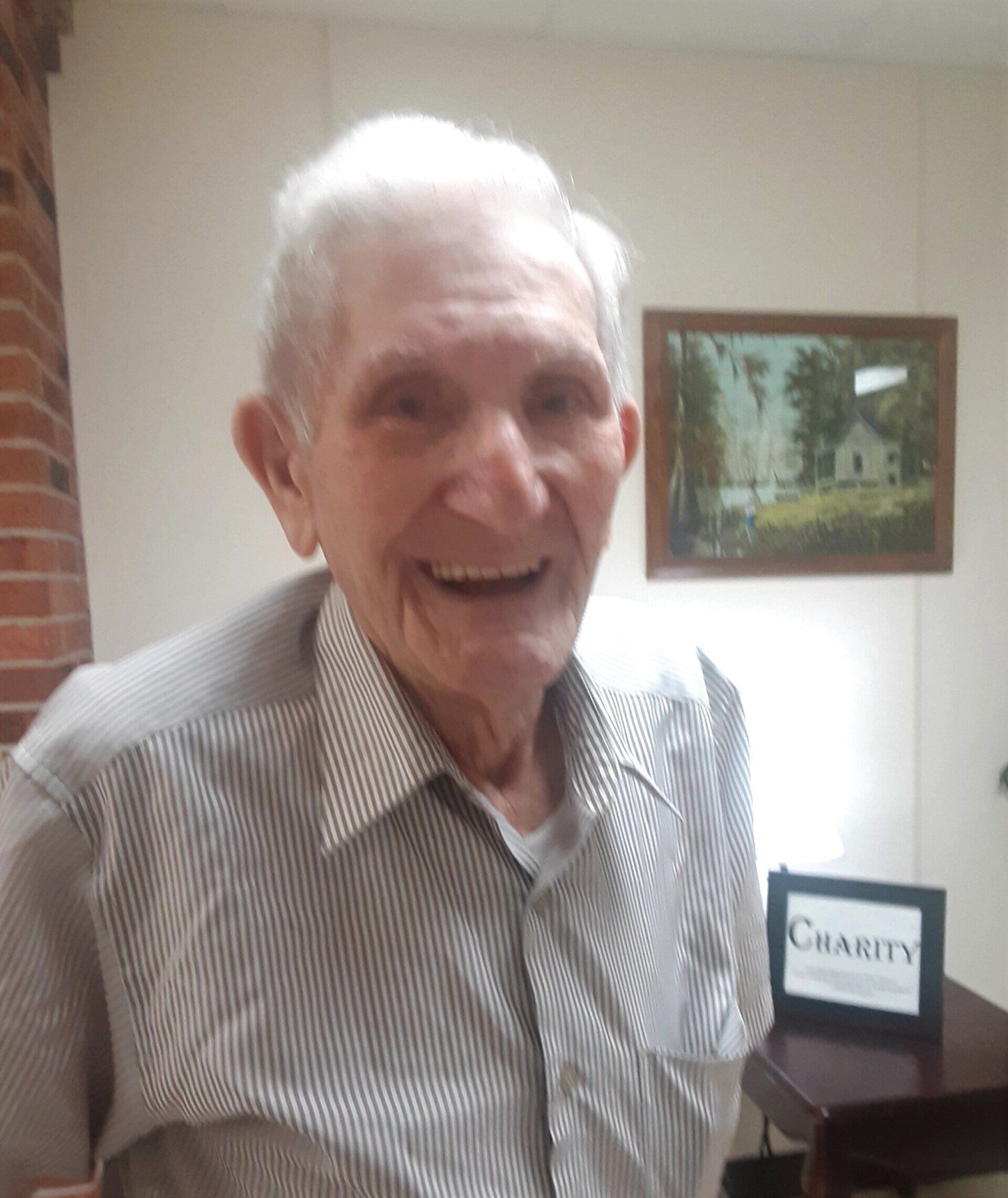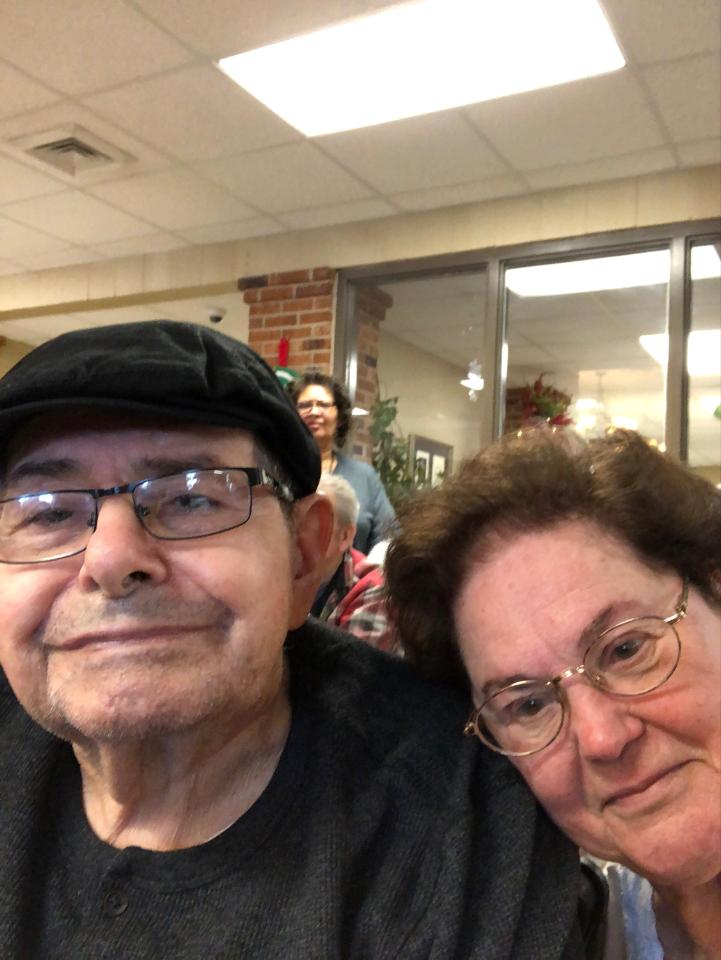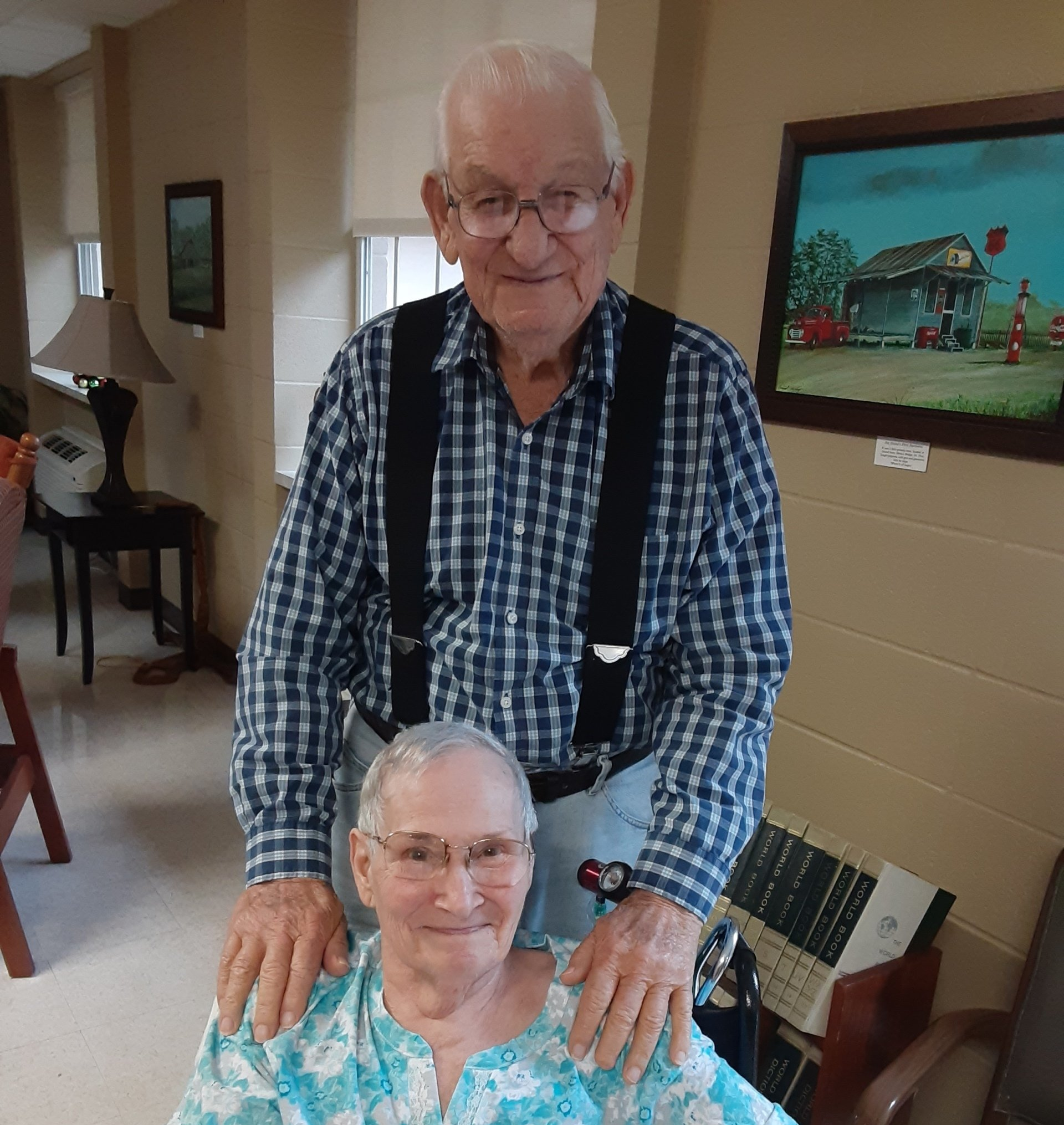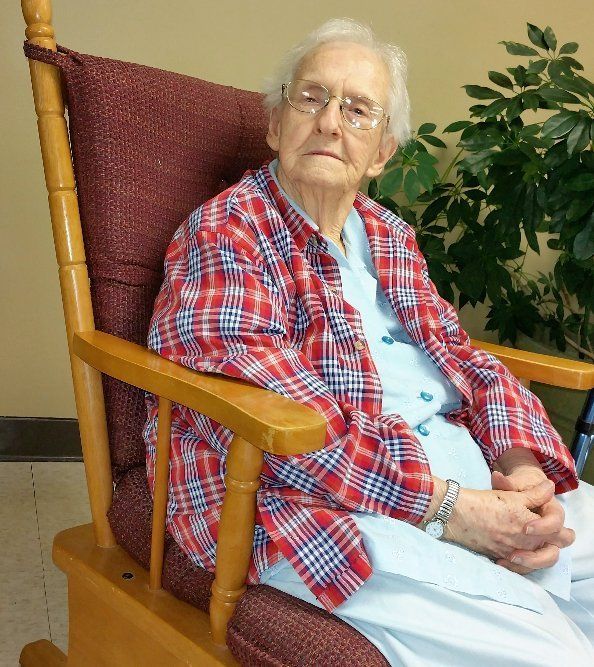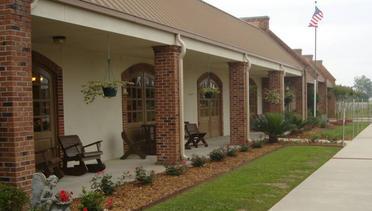TO CALIFORNIA AND BACK
Elia Courville Roy, Mrs. Alton Roy, shares some life experiences.
Elia Roy was born near Washington, Louisiana in 1929. At 86, she was sitting in her usual spot and looking
pretty all dressed up in blue. When I
complimented her that she was “pretty in blue,” she told me about her shopping
habit. When she found something she
liked, she bought the item in every color she could. She had bought the slacks in four colors and
made the blue eyelet blouse. Now, still
enjoying the comfort and look of those slacks, she wishes she had bought a yard
and a half of fabric in all the slack colors and taken the time to sew the
blouses to match. Such is life. We do
have regrets about the things we did not do.
I asked Elia if I could take her picture and then I showed
her the picture on my phone. She was
pleased and said it is her favorite picture ever.
There are many talented women who could sew. Elia’s sewing is probably what got her to
work for Fruit of the Loom in St. Martinville. Her life has been filled with little
adventures.
After spending almost seven years in Washington, Elia’s
parents moved the family to Leonville. Her
father was Ethienne “Pat” Courville, first cousin to A.B. Courville, owner of the
Toyoto dealership in Opelousas. Elia’s
mother was Francis Janise, “like the Janise family who has the grocery store in
Sunset,” Elia tells me.
Elia remembers a girl at school who wore just one shoe. It seems she had a hole in her sock which caused
a blister on her heel. With French as my
first language, I have no problem understanding this story. Elia said when she asked the little girl why
she wore just one shoe, the child answered:
“My shoe blessed me.” “ Blessure
” is the French word for
“blister.”
At 18, Elia left home to work for the Greyhound Bus Station
in Opelousas. So, she was a career woman and I am not surprised. I could tell she was an independent woman.
When I asked about her husband, Elia tells me she met her husband through a
neighbor who was in the military and stationed in Korea with Alton Roy. Alton spent 18 months in Korea in the service
of his country. He was a native of Arnaudville and a son of Clebert Roy and
grandchild of Ozema Roy. I know about
Ozema Roy because he was a relative of my husband, Brod Roy. Ozema Roy was the
person killed in a duel with Wade Higginbotham on Christmas night 1909. The
story can be found in Herman J. Robert’s book History of St. Martin Parish
Sheriff’s Department
, page 89.
“A Bloody Fight. On Christmas night between Ozema Roy owner of the saloon (The Buckhorn Bar) and Wade Higginbotham, a deputy sheriff from St. Landry – Both were dead. Eleven shots were fired Roy 5 and Higginbotham six. Isaac Thibodeaux and Homer Hardy were arrested and thought to be instigators.”
Alton’s mother was Eunice Stelly. All of this history was before Elia’s time.
When Elia’s soldier neighbor came on leave, she got Alton’s
address and started writing to him. When Alton returned from Korea, he was
stationed in Fort Polk and stayed there until his discharge. On Easter
Sunday, April 5, 1953, in Leonville, Louisiana, Alton married Elia. They had
two children, a daughter, “Elaine” who married Gilbert Bazar, and a boy “Ted”
who became the police chief in Leonville. His wife's name is Betty.
Alton was a dragline operator for a contractor. When the contractor’s job ended, work also
ended for Alton. They moved near his
parent’s farm in Godeaux, an area near Lebeau, in St. Landry Parish. Alton
joined his father on the farm until he could find another job. With two children ages 6 and 4, he had to
work.
Elia tells about Alton’s brother who they knew worked in a
sawmill and believed might be working in Darrington, Washington, O’Brien,
Oregon or Crescent City, California. They wrote three letters addressed to
Alton’s brother in all three towns asking if there was work for Alton in the
sawmill. They got a response from
Crescent City, California, saying: “Come on down.” Alton drove to California first. Traveling by bus, Elia and the two children
followed later.
While living in California, Alton and Elia owned a Jeep
which they used to travel up the mountains.
Alton hunted bears and his dog had not come out of the forest. They left the children with friends and drove
to the mountains to see if they could find their dog. The roads were very narrow then and you had
to cross logging trucks. “I learned to drive the Jeep and when we saw a logging
truck coming towards us, I would get in the passenger seat and Alton would
drive passed the truck and then I took the wheel again. When Alton left for work, he would say: ‘You
can practice your driving but stay out of the ditch and the house!’
“There was a trail behind our house that went to a grocery
store. The grass was tall and I would
practice driving that trail. But, Alton
had to turn the Jeep around because I didn’t know how to do that yet. At first
the children were afraid to ride with me.”
Alton and Elia spent 13 years in California and enjoyed
living there. Elia worked six year in a seafood cannery. She did master driving, got her driver’s
license and bought a new El Camino. She
also enjoyed working in a restaurant where she was the dishwasher
operator. She did not have to wash the
dishes by hand. She loaded and unloaded
the dishwasher.
It never got very cold in Crescent City but it was damp and windy because they were only about a quarter mile from the ocean. On Sundays, the family took the truck to the beach for some fun times. They were about 80 miles from Eureka, California. When the 37th President, Richard Milhous Nixon, who served from 1969 to 1974, ended all tree cutting, Alton was looking for work again.
Alton and his daughter, Elaine, loaded up his truck and
drove back to south Louisiana where he bought the family a home. Elaine went to
work in the Advertising Department of the Daily World in Opelousas. Ted had to
complete two months of school before Easter break when he and his mother could
drive back to Louisiana.
Elia remembers the drive very well. She said she sweated
during that trip. *The Interstate
Highway was under construction at the time.
Elia remembers there were lots of detours. Her car was loaded with all the possessions
that would fit. She made the trip in two and a half days. She did not drive at night. She and Ted found a place to sleep where they
felt safe; but, by 5 a.m., they were on the road heading home. After a night of rest and breakfast in
Tucson, Arizona, they headed for New Mexico but did not come to a place where
they felt safe enough. They drove all day
without eating until they reached San Antonio, Texas. In San Antonio, they ate and placed a call to
Elia’s sister in Houston to tell her they were headed in her direction. When
they woke up, they got on the road headed for Houston. In Houston, they had
dinner and slept at a place right off the highway so that they could get on the
road again in the early morning; but, they did get to visit with her sister who
came to see them.
After settling back home, Elia went to work in St.
Martinville for Fruit of the Loom. It
was 33 miles one way and Elia worked there for 15 years and then retired at age
58. At that time, she had a grandson who
needed tutoring. Elia felt it was more
important to help her grandson than to continue earning a paycheck.
Elia has been at J. Michael Morrow Nursing Home five years – “since February 3, 2011,” she says right away. Of course, Elia loves her family. Elaine and Gil have a daughter, Jenny LeDoux who is a probation officer for the DA. Her grandson, Jason, is Ted and Betty’s son. He is coming to visit Elia and I can tell how important that is to her. She is sorry that he is disabled and unable to work. She remembers that he worked for Walmart and that he was a good worker.
Her granddaughter Jill is married to Eric Lastrapes. They were high school sweethearts and Jill
works at ULL as a counselor.
I enjoy Elia and see her almost every time I visit the nursing home. She has a favorite chair where she sits and chats with other residents and visitors. She is an interesting lady and has lived a courageous life. There are many more stories for her to tell.
I again feel grateful to Elia and to Nonco, Auguste Pelafigue, the old man who walked the streets of Arnaudville delivering the leaflets of the Sacred Heart of Jesus. He is my inspiration for visiting the residents at J. Michael Morrow Nursing Home. I feel so blessed to be doing this volunteer work because I meet some incredible people every time I go. They have become my loving friends. Thank you, Nonco.
*Interstate 10 - From Wikipedia, the free encyclopedia - Length: 2,460.34 miles - Existed: 1957 – present - Major junctions - West end: SR 1 in Santa Monica, CA - I‑5 in Los Angeles, CA -
I‑15
in Ontario, CA - I‑25 in Las Cruces, NM - I‑20 at Scroggins Draw, TX - I‑35 in San Antonio, TX - I‑45
in Houston, TX - I‑55
in LaPlace, LA - I‑65
in Mobile, AL I‑75 near Lake
City, FL - East end: I‑95
in Jacksonville, FL .
States: California,
Arizona, New Mexico, Texas, Louisiana, Mississippi, Alabama, Florida
Interstate 10 (I-10) is the southernmost major interstate highway in the American Interstate Highway System. It stretches from the Pacific Ocean at State Route 1 (SR 1) (Pacific Coast Highway) in Santa Monica, California, to I-95 in Jacksonville, Florida. This freeway is part of the originally planned Interstate Highway network that was laid out in 1956, and its last section was completed in 1990. I-10 is the fourth-longest Interstate Highway in the United States, following I-90, I-80, and I-40. About one-third of its length is within the state of Texas, where the freeway spans the state at its widest breadth.
Around Our Home Away From Home, Our Stories
